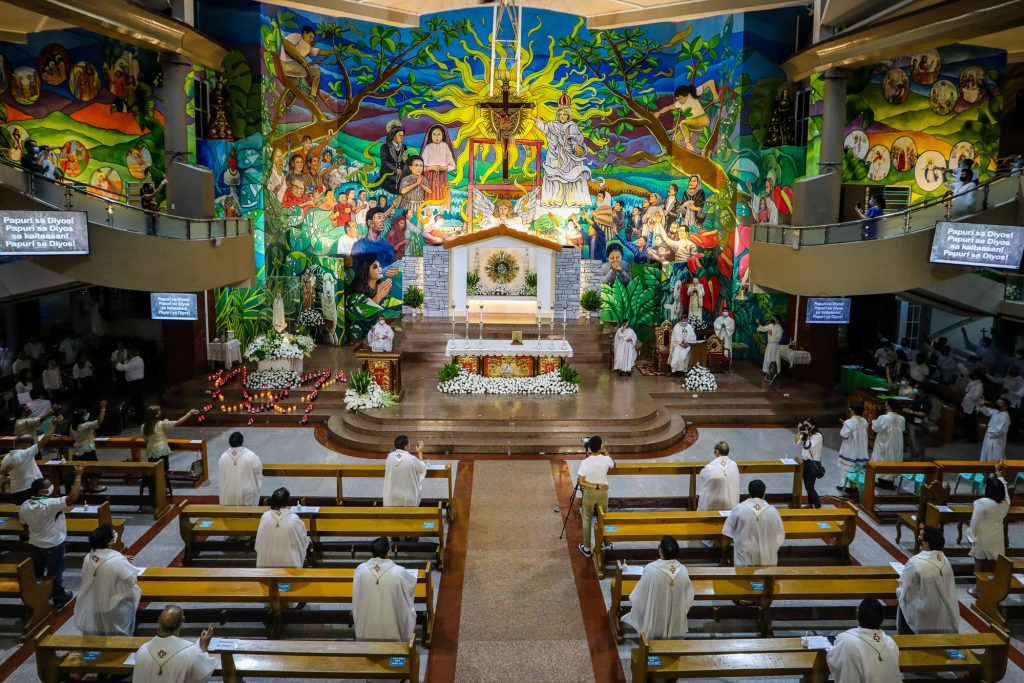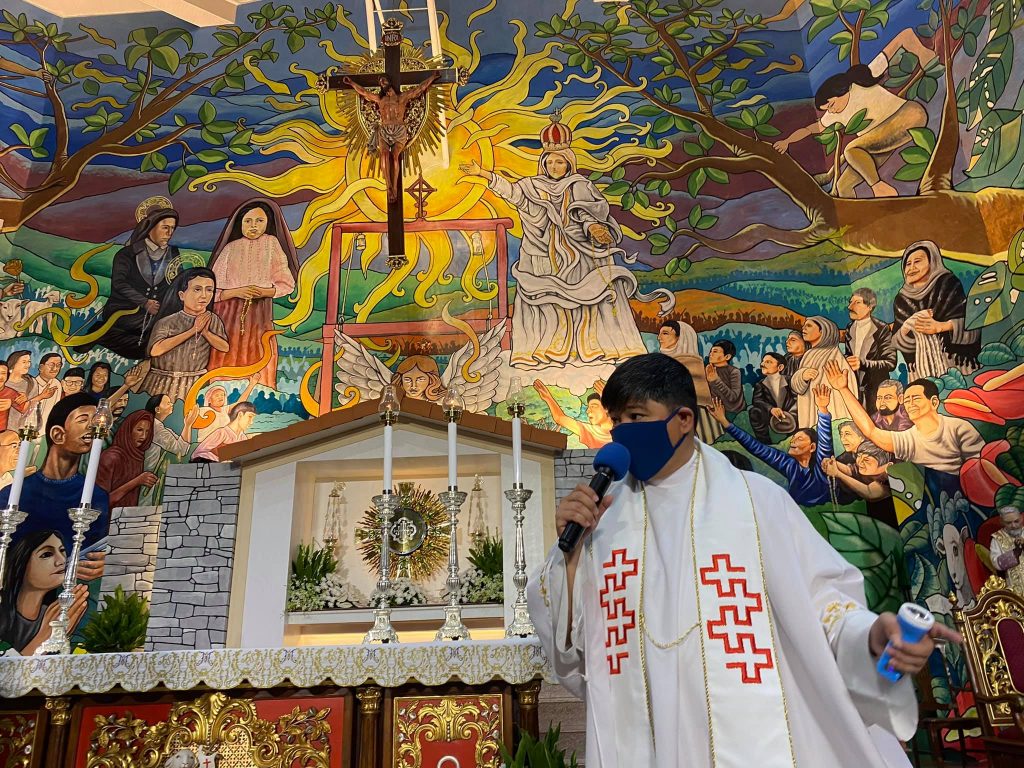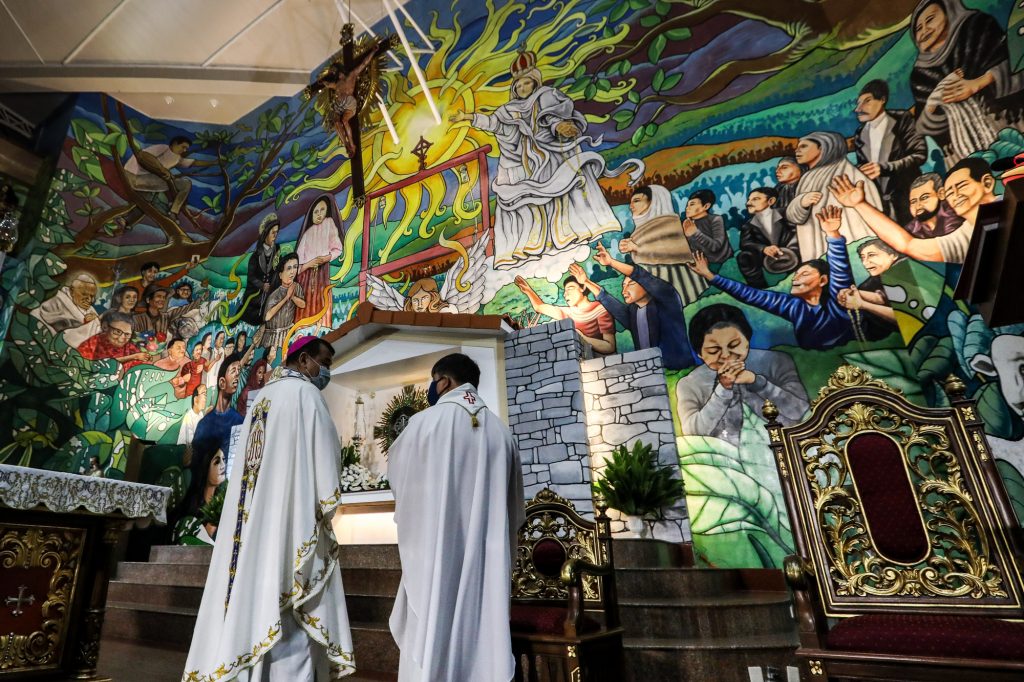
A Catholic parish in the outskirts of the Philippine capital unveiled what could be the country’s biggest mural on a church altar on October 13, Feast of the Our Lady of Fatima.
The mural, which is estimated to be about 378 square meters, puts the spotlight on the story of the apparition of the the Blessed Virgin Mary in the town of Fatima in Portugal.
“I wanted the people to remember what Our Lady said in that apparition: to pray the rosary every day for the conversion of sinners and for peace,” said parish priest Aristeo de Leon of the Our Lady of Fatima parish in the Diocese of Novaliches.
Father De Leon said he was “nervous” when he started the project because he was new in the parish, but added that “if it is God’s will, everything will just fall into place.”
“And the outcome is always beautiful,” said the priest.
Father De Leon said he had to read books on the apparition in Fatima before he started the project.
“As I got to know the children better, and realizing that as young as they were their love and devotion to Mary are already deep, so I was challenged as a priest to magnify my faith and love for God,” he said.
During his first few months in the parish, the priest said he already wanted to have the altar painted because termites were eating up the wooden structure.
Instead of putting up a “retablo,” a retable or reredos above an altar that is usually an elaborate wooden structure with sculptures, Father De Leon decided on a mural.

The priest consulted his friend, AG Saño, about the project. The renowned and multi-awarded Filipino artist immediately took up the project.
Saño has painted more than 700 murals in 16 countries depicting peace and environment.
“I’ve been wanting him to do the painting,” said Father De Leon, “but he was too busy with a lot of projects.”
With the lockdown due to the pandemic, the priest and the artist finally got the opportunity to push through with the project.
Father De Leon said there were criticisms about the mural as being “unliturgical” but the priest said it is the parish’s way of “giving honor” to health frontliners.
“The frontliners were very inspiring in terms of their strength to hold on,” said the priest.
“Also, let us not forget that two of the shepherd children, Jacinta and Francisco, died during the Spanish flu epidemic that hit Europe,” he said.
“It’s just proper that we dedicate this to [the frontliners] to boost their morale, to remind them that God is with them and He will never forsake them,” said the priest.
Father De Leon said paintings have been long used by the Church “as a way of teaching people” about faith.
The priest said that despite the criticisms, a lot of people appreciated the art work.

On July 13, 1917, the Blessed Virgin Mary reportedly appeared before three shepherd children at the Cova da Iria, in Fátima, Portugal.
The three children were Lúcia dos Santos and her cousins Francisco and Jacinta Marto.
On May 13, 1946, Pope Pius XII granted a canonical coronation to the venerated image enshrined at the Chapel of the Apparitions of Fátima via his apostolic legate, Cardinal Benedetto Aloisi Masella.
On Nov. 11, 1954, he raised the Sanctuary of Fátima to the status of a minor basilica by his papal brief “Lucer superna.”
The published memoirs of Lúcia dos Santos in the 1930s revealed two secrets that she claimed came from the Virgin while the third secret was to be revealed by the Catholic Church in 1960.
The controversial events at Fátima gained fame due partly to elements of the secrets, prophecy, and eschatological revelations allegedly related to the Second World War and possibly more global wars in the future.
The Blessed Virgin also reminded the children to pray the Holy Rosary.
The children, now both saints, Francisco and Jacinta, died in 1919 and 1920, respectively, due to the influenza epidemic that struck Europe.
Lúcia became a Carmelite nun and died on Feb 13, 2005.
Source: Licas Philippines
0 Comments